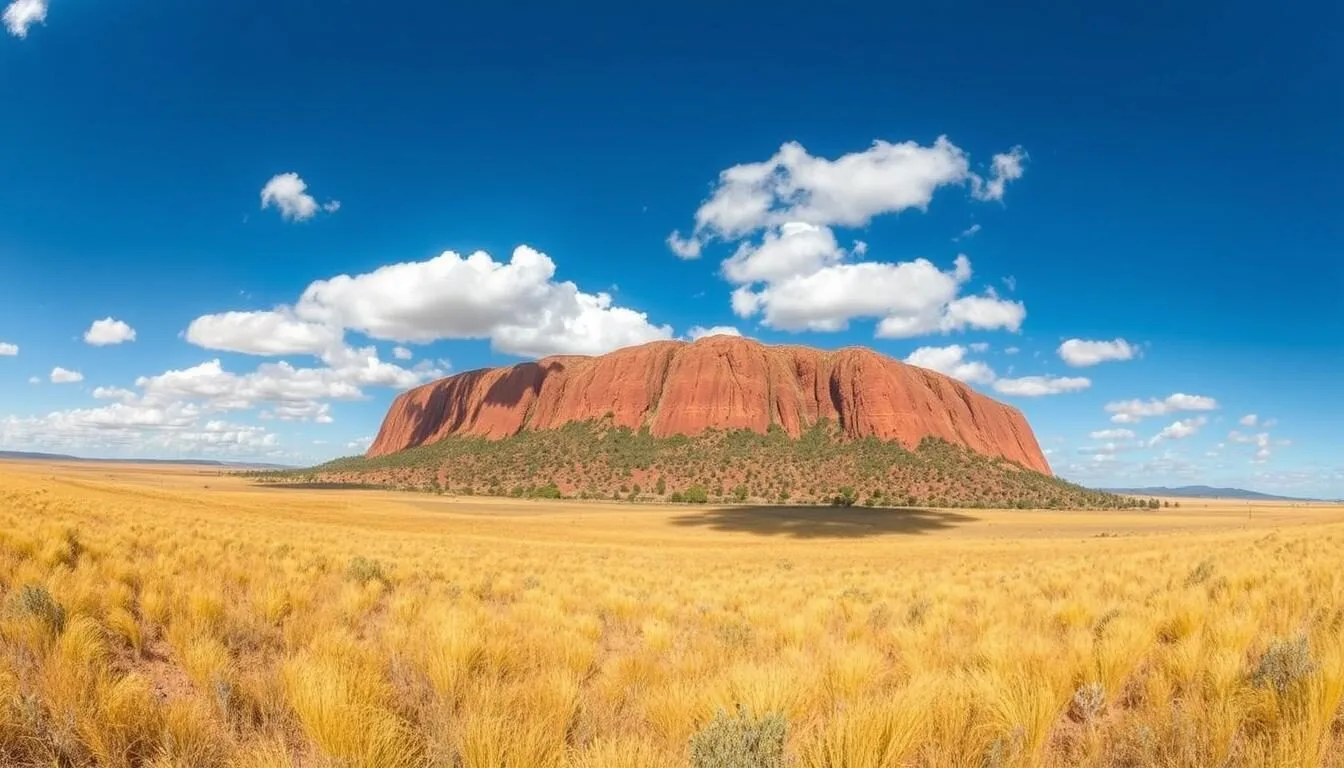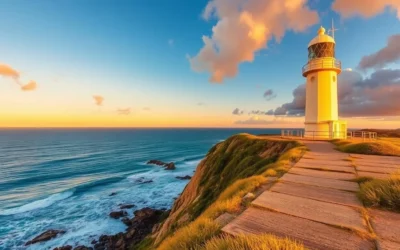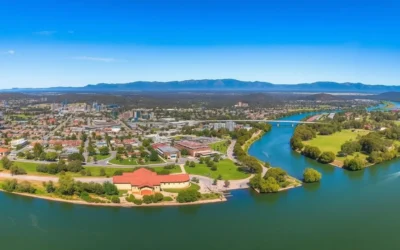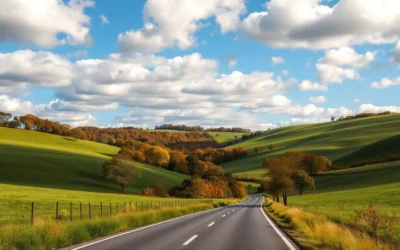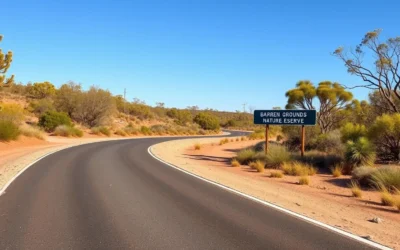Rising dramatically 364 meters above the surrounding plains, The Rock Nature Reserve – Kengal Aboriginal Place is one of New South Wales’ most striking yet underappreciated natural wonders. This ancient formation, dating back millions of years, offers visitors panoramic views stretching as far as Mount Kosciuszko and the Victorian Alps on clear days. Known to the Wiradjuri people as Kengal (“sloping hill”), this sacred site combines rich indigenous heritage with diverse ecosystems, making it a must-visit destination for nature lovers and adventure seekers alike.
Getting There & Planning Your Journey
The Rock Nature Reserve is conveniently located just 25 kilometers south of Wagga Wagga and 96 kilometers north of Albury in the picturesque Riverina region. If you’re coming from Sydney, expect approximately a 5-hour drive southwest, while Melbourne visitors face about a 4-hour journey northeast.
Ready to Visit The Rock Nature Reserve?
Find the best flight deals to Wagga Wagga Airport, the closest major airport to The Rock Nature Reserve.
The reserve is easily accessible by car via the Olympic Highway. Once you arrive at the small township of The Rock, simply follow the clearly marked signs to the reserve entrance. The main parking area provides ample space and serves as the starting point for the various walking tracks.

For those without a vehicle, public transport options are limited. The nearest train station is in the township of The Rock, but you’ll need to arrange transportation for the final few kilometers to the reserve entrance.
Explore at Your Own Pace
Rent a car to easily access The Rock Nature Reserve and explore the surrounding Riverina region.
Best Time to Visit & Weather Tips
The Rock Nature Reserve experiences four distinct seasons, each offering a unique perspective on this natural wonder. Autumn (March to May) and spring (September to November) are generally considered the ideal times to visit, with mild temperatures perfect for hiking and outdoor activities.
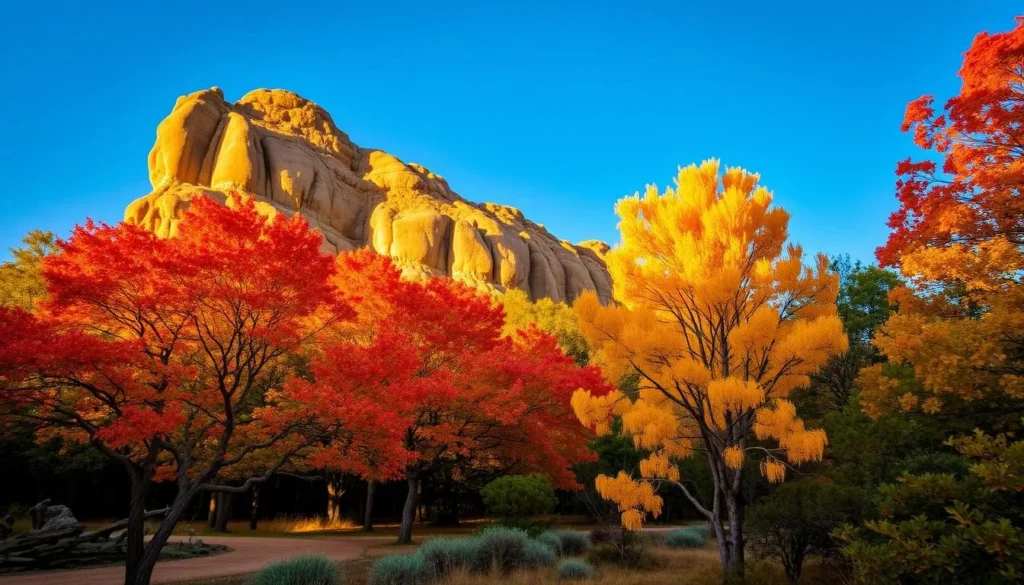
Weather Tip: Summer temperatures (December to February) can exceed 40°C (104°F), making hiking challenging and potentially dangerous. If visiting during summer, start your hike early in the morning and carry plenty of water.
Winter (June to August) brings cooler temperatures ranging from 3-15°C (37-59°F) and occasional frost, but clear days offer spectacular visibility from the summit. Spring not only provides comfortable hiking conditions but also treats visitors to wildflower displays across the reserve.
Regardless of when you visit, always check the weather forecast beforehand and be prepared for sudden changes, especially if planning to hike to the summit. The reserve is open year-round, but may close during extreme fire danger periods or after heavy rainfall.
Where to Stay
While there’s no accommodation within The Rock Nature Reserve itself, several options are available in the surrounding area to suit different preferences and budgets.
Wagga Wagga (25km)
As the largest nearby city, Wagga Wagga offers the widest range of accommodation options, from budget motels to upscale hotels. Staying here provides easy access to restaurants, shops, and other amenities while being just a 25-minute drive from the reserve.
The Rock Township (5km)
For those wanting to stay closer to the reserve, the small township of The Rock has limited but charming accommodation options, including a historic pub with rooms and several bed and breakfasts. Staying here puts you just minutes from the reserve entrance.
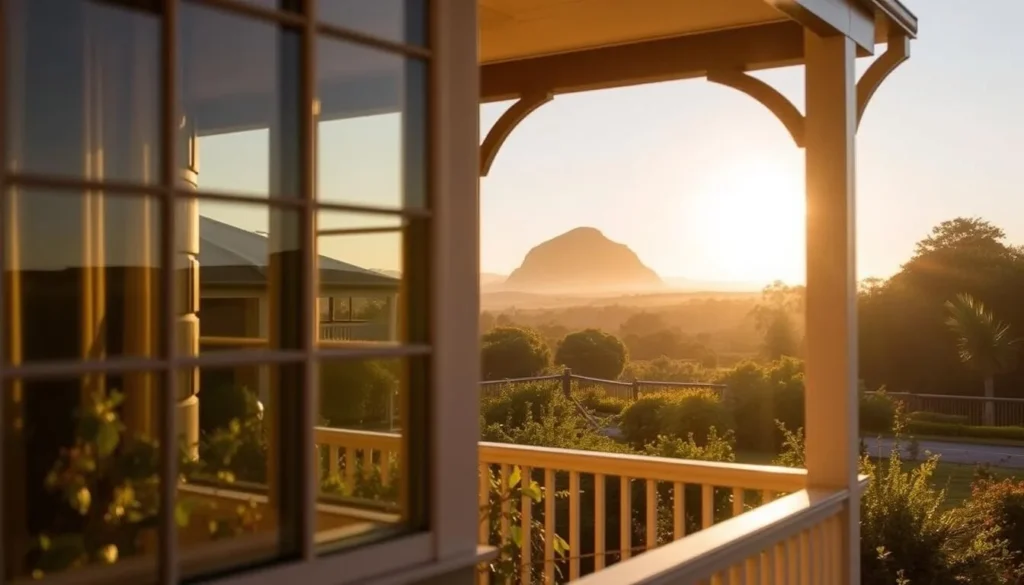
Find Your Perfect Stay
Browse accommodations near The Rock Nature Reserve – from budget-friendly options to comfortable country retreats.
For the more adventurous, camping is available at nearby Galore Hill Scenic Reserve, approximately 30 minutes drive from The Rock. This basic campground offers toilet facilities and barbecue areas but requires visitors to bring their own water and supplies.
Hiking Trails & Outdoor Activities
The Rock Nature Reserve offers several well-marked hiking trails catering to different fitness levels and interests. The two main tracks to the summit provide different experiences of this remarkable geological formation.

Yugay Track
This more challenging 5km return track starts climbing almost immediately from the car park and takes you past impressive rock formations known as The Towers. The track involves some rock scrambling and steeper sections but rewards hikers with spectacular views. Allow 2-3 hours for the return journey.
Yerong Nature Trail
A more gradual 6km return track that winds around the base before ascending to the summit. This track is better suited for families and those preferring a more gentle climb. The trail features informative signs about local flora and fauna. Allow 3-4 hours for the complete return journey.
Both tracks converge near the summit, where hikers are rewarded with breathtaking 360-degree views across the Riverina plains. On clear days, you can see all the way to the snow-capped peaks of the Australian Alps.

Local Tip: For photography enthusiasts, sunrise and sunset offer the most dramatic lighting conditions at The Rock. If hiking for sunset, ensure you bring a headlamp for the descent as the trails are not illuminated.
Beyond hiking, the reserve is popular for birdwatching, with over 100 bird species recorded, including the colorful turquoise parrot and majestic peregrine falcons that nest in the cliffs. Rock climbing is permitted in certain areas outside of the falcon breeding season (July to December).
Enhance Your Experience
Discover guided tours and activities around The Rock Nature Reserve for an unforgettable experience.
Wildlife & Natural Features
The Rock Nature Reserve is a biodiversity hotspot, with its unique position creating diverse habitats that support an impressive variety of plant and animal species. The reserve’s varying elevations and aspects create distinct ecological zones, from dry forest to moist gullies.
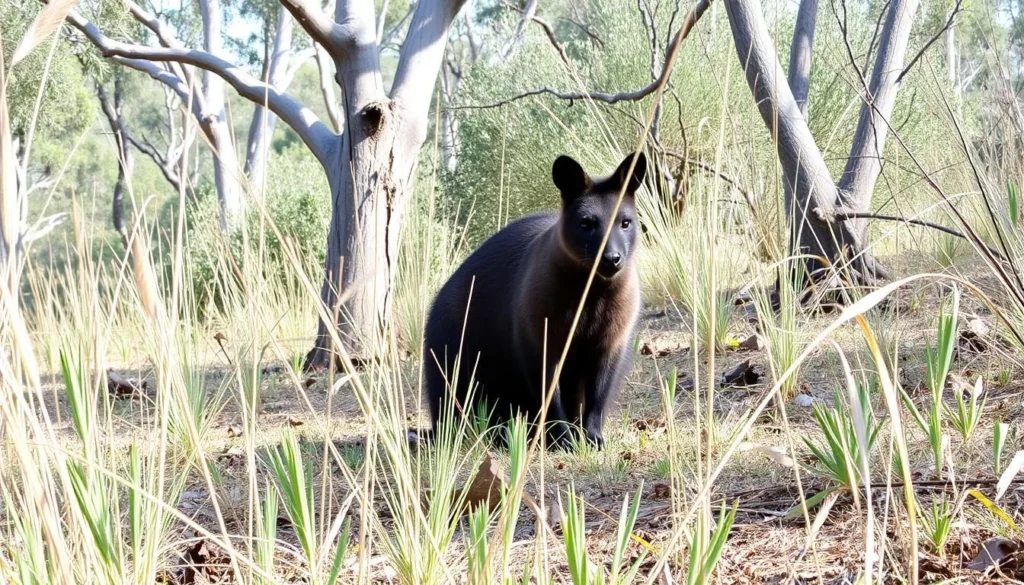
Wildlife enthusiasts should keep an eye out for swamp wallabies, especially in the early morning or late afternoon when they’re most active. Eastern grey kangaroos can also be spotted grazing in the open areas near the reserve boundaries.
Birdwatchers will be delighted by the diversity of avian life, including:
- Turquoise parrots with their vibrant blue plumage
- Peregrine falcons nesting in the rocky cliffs
- Wedge-tailed eagles soaring on thermal currents
- Glossy black cockatoos feeding on casuarina seeds
- A variety of honeyeaters attracted to flowering eucalypts
The reserve’s plant life is equally diverse, with over 240 native plant species recorded. Spring visitors will be treated to colorful wildflower displays, including native orchids and the rare woolly ragwort, which grows in the sheltered rock crevices.
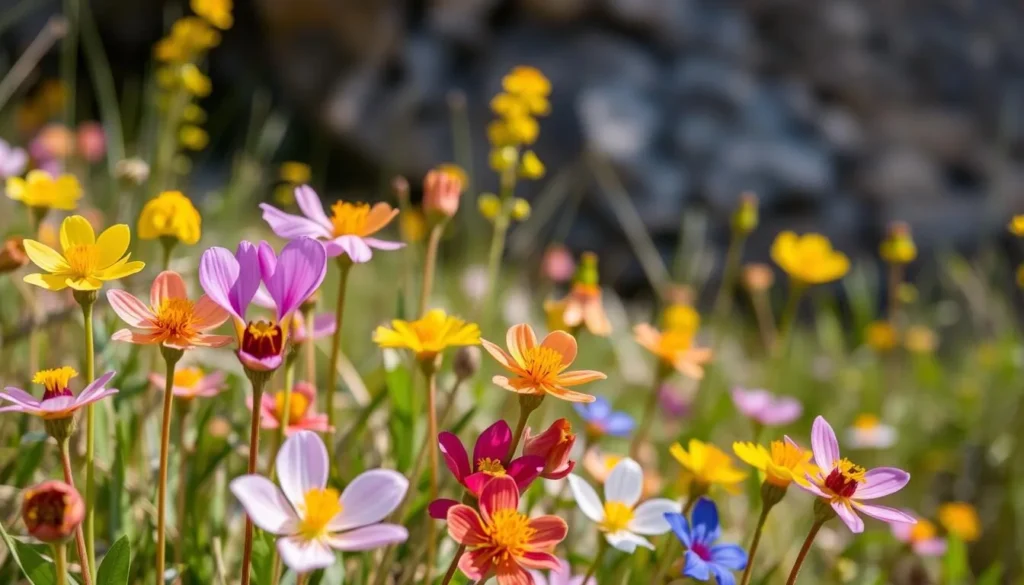
Wildlife Safety: While exploring, remember that all plants and animals in the reserve are protected. Observe wildlife from a distance, never feed native animals, and stay on marked trails to minimize your impact on this fragile ecosystem.
Aboriginal Cultural Significance
The Rock Nature Reserve – Kengal Aboriginal Place holds deep cultural significance for the Wiradjuri people, the traditional custodians of this land. The name “Kengal” means “sloping hill” in Wiradjuri language, reflecting the distinctive profile of this ancient formation.

According to Wiradjuri creation stories, Kengal was formed by Biyaami, the creator spirit. Two related stories explain its origin: one tells of two warrior brothers and a woman who broke traditional kinship laws and were turned to stone as a consequence. Another version describes how Biyaami’s companions, two dingoes known as Mirrigan, were transformed into the rock formation where they await his return.
Throughout the reserve, you’ll find interpretive signs that share these stories and explain the traditional uses of various plants for food, medicine, and tools. The summit area was traditionally used as a lookout and ceremonial site, with the commanding views allowing Wiradjuri people to monitor movement across their country.
The dual naming of the reserve as “The Rock Nature Reserve – Kengal Aboriginal Place” reflects the importance of acknowledging both the European and Aboriginal heritage of this significant landmark.
Visitors are encouraged to approach the site with respect for its cultural significance. Photography is permitted throughout the reserve, but visitors should be mindful of the sacred nature of certain areas, particularly around the summit.
Practical Travel Tips

Facilities
The main picnic area at the reserve entrance provides toilets, barbecue facilities, picnic tables, and information displays. There are no facilities on the walking tracks or at the summit, so plan accordingly. The nearest food and supplies are available in the township of The Rock, 5km away.
What to Bring
Even for short walks, carry plenty of water (at least 2 liters per person), sun protection (hat, sunscreen, sunglasses), sturdy footwear, and weather-appropriate clothing. A basic first aid kit, insect repellent, and a fully charged mobile phone are also recommended.
Are dogs allowed in the reserve?
No, pets are not permitted in The Rock Nature Reserve to protect the native wildlife and maintain the natural ecosystem.
Is there an entrance fee?
No, entry to The Rock Nature Reserve is free. However, donations to support conservation efforts are appreciated.
Can I camp in the reserve?
No, camping is not permitted within The Rock Nature Reserve. The nearest camping facilities are at Galore Hill Scenic Reserve, approximately 30 minutes drive away.

Nearby Attractions
While The Rock Nature Reserve is certainly worth a dedicated visit, the surrounding Riverina region offers several complementary attractions that can enhance your trip.

Wagga Wagga
Just 25km north, Wagga Wagga is the largest inland city in NSW and offers excellent dining, the Wagga Wagga Art Gallery, and the beautiful Botanic Gardens. The Murrumbidgee River provides opportunities for fishing, kayaking, and riverside walks.
Lockhart
Known as the “Verandah Town” for its historic buildings with ornate verandahs, Lockhart is 20km west of The Rock. Don’t miss the Greens Gunyah Museum and the impressive farm art sculptures created from recycled machinery parts.
Galore Hill Scenic Reserve
Located 30km southwest of The Rock, this reserve offers additional hiking opportunities, lookouts, and basic camping facilities. The summit provides panoramic views that complement those from The Rock.
Wine enthusiasts should consider exploring the emerging cool-climate wineries of the region, with several cellar doors offering tastings within a 30-minute drive of The Rock. Local vineyards specialize in shiraz, chardonnay, and alternative varieties suited to the region’s climate.
Plan Your Visit to The Rock Nature Reserve
The Rock Nature Reserve – Kengal Aboriginal Place offers a perfect blend of natural beauty, cultural significance, and outdoor adventure. Whether you’re challenging yourself on the summit trails, photographing the diverse wildlife, or simply enjoying a peaceful picnic with spectacular views, this hidden gem of the Riverina region promises a memorable experience.

With its accessibility from major centers like Wagga Wagga and Albury, The Rock Nature Reserve makes for an ideal day trip or a rewarding stop on a longer exploration of regional New South Wales. The combination of dramatic landscapes, abundant wildlife, and significant cultural heritage creates an experience that appeals to nature lovers, photographers, hikers, and families alike.
Ready for Your Adventure?
Start planning your trip to The Rock Nature Reserve today. From flights and accommodations to local tours, we’ve got you covered.
Remember to check weather conditions before your visit, pack appropriate supplies, and approach this special place with respect for both its natural environment and cultural significance. The memories and photographs you’ll take home from The Rock Nature Reserve will surely inspire you to explore more of Australia’s remarkable natural treasures.
The above is subject to change.
Check back often to TRAVEL.COM for the latest travel tips and deals.
